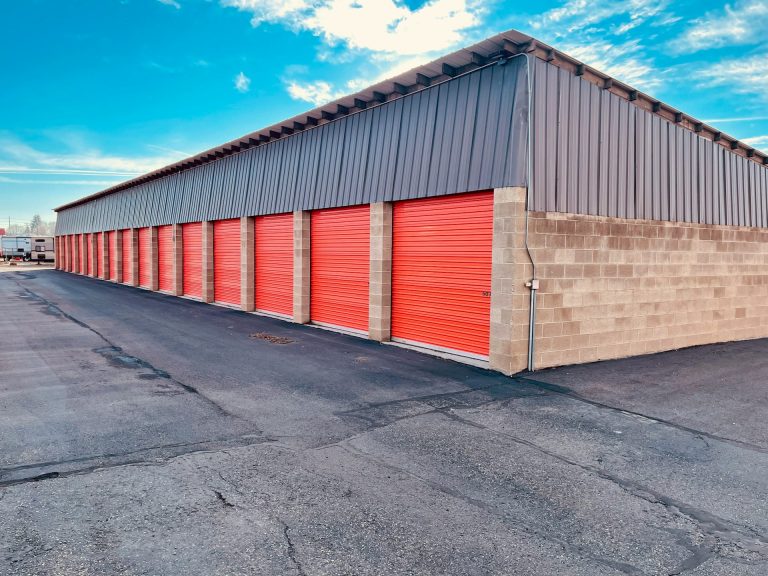How to Store Various Foods at Home: Essential Tips
Have you ever thought about how to make your groceries last longer? Whether it’s finding the best way to keep perishable foods fresh or the right conditions for storing meat, mastering food storage is a crucial kitchen skill. This guide offers practical tips for keeping a variety of foods fresh at home, including in the fridge, pantry, and through canning. From perishable items and pantry goods to canned foods and leftovers, we’ve got expert advice on keeping things fresh and reducing waste. Say goodbye to soggy perishables and stale bread – let’s learn about effective food storage.
Understanding Food Categories
Perishables
Perishable foods like dairy products, meat, and seafood require quick refrigeration to prevent bacterial growth. Understanding the shelf life of perishable items, canned foods, and the fridge is crucial for maintaining food safety. Perishable foods like raw chicken should be used within 1-2 days while eggs can last up to 3-5 weeks.
Proper storage techniques are essential to prevent spoilage. For instance, storing meat on the bottom shelf of the fridge prevents juices from dripping onto other foods. Using airtight containers to store perishable foods like berries can help extend their freshness.
Semi-Perishables
Identifying semi-perishable food items in your pantry is important as they have a longer shelf life than perishables but still need special attention. Differentiating between perishable and semi-perishable foods involves understanding their moisture content and susceptibility to spoilage.
Effective ways to extend the shelf life of semi-perishable items include storing potatoes in a cool, dark place away from onions and keeping tomatoes at room temperature until fully ripe before refrigerating them.
Non-Perishables
Non-perishable foods like canned goods and grains have a long shelf life due to their low moisture content or preservation methods such as canning or dehydration. Proper storage methods for non-perishable items involve keeping them in a cool, dry place away from direct sunlight and moisture.
Creating an organized system to store non-perishable food helps maintain their quality over time. Labeling cans with expiration dates or arranging pantry shelves based on food categories for easy access is a helpful tip for organizing a store.
Storing Fresh Produce
Refrigeration is crucial for preserving fresh produce. Maintaining the optimal refrigerator temperature, typically around 40°F (4°C), is essential to extend the shelf life of perishable items like fruits and vegetables. By strategically arranging these items in the fridge, you can prevent cross-contamination and store their freshness for a longer period. For instance, store fruits separately from vegetables to avoid ethylene gas exposure, which can lead to spoilage.
It’s important to wash all types of fresh produce before storage. Different fruits and vegetables may require specific washing methods; for example, leafy greens should be soaked in cold water while berries need gentle rinsing under running water. After washing, ensure proper drying as excess moisture can accelerate spoilage. Drying delicate items like berries with paper towels and using salad spinners for leafy greens are effective methods.
Implementing an organized approach is vital when storing fresh food at home. Maximize pantry and cupboard space by categorizing food items into groups such as grains, canned goods, spices, etc., making them easily accessible when needed. Labeling these categories further enhances organization and ensures that nothing gets lost or forgotten in the depths of your pantry or cupboard.
Preserving Fresh Herbs
There are various methods you can use to ensure they stay flavorful and ready for use. One effective way is through drying, which removes the moisture from the herbs, extending their shelf life. By air-drying or using a dehydrator, you can preserve herbs like rosemary, thyme, and oregano. Dehydration significantly impacts food longevity by preventing mold growth and bacterial contamination.
Another method for preserving fresh herbs is freezing them. Freezing helps maintain the flavor and nutritional value of the herbs while extending their storage life. Suitable packaging options include freezer bags or ice cube trays with water or oil for easy portioning when cooking. It’s essential to rotate frozen items regularly to ensure older batches are used first before reaching their expiration date.
Properly storing dried foods preserves their quality over time; this includes keeping them in airtight containers away from light and moisture. By understanding these preservation techniques, you can enjoy your favorite fresh herbs all year round.
Utilizing Your Freezer
Freezing Foods Safely
Freezing various foods at home is an excellent way to preserve their freshness and extend their shelf life. To ensure safe freezing, it’s crucial to prevent freezer burn. This can be achieved by adhering to safe freezing practices such as using airtight containers or freezer bags. Improper freezing can significantly impact the quality of the food, leading to texture changes and loss of flavor. By utilizing proper storage techniques, you can maintain the taste and texture of your frozen foods for longer periods.
It’s important to understand that using a fridge alone may not be sufficient for certain types of foods, especially those with shorter shelf lives. For instance, berries and leafy greens are best preserved through freezing rather than refrigeration due to their delicate nature. When storing these items in the freezer, always use suitable containers or freezer bags designed for long-term storage.
Effective Strategies
Developing a comprehensive strategy for storing various types of foods is essential for efficient meal planning and reducing food waste. Incorporating rotation and inventory checks into your storage plan ensures that older items are used first while fresher ones are stored accordingly. Adapting strategies based on seasonal availability and consumption patterns allows you to make the most out of your stored foods without compromising quality.
For example:
- During peak strawberry season, freeze excess berries in portioned freezer bags for later use.
- Implement a “first in, first out” approach when organizing your frozen goods.
Refrigeration Best Practices
Maintaining consistent temperatures is crucial. Monitoring temperature fluctuations in pantries, refrigerators, and freezers is essential for food safety. Using thermometers can help ensure that the refrigerator and freezer maintain the recommended temperatures of 40°F or below for the refrigerator and 0°F or below for the freezer.
Separating different food categories is vital to prevent cross-contamination. Store raw meats separately from other food items to avoid potential bacterial spread. Utilize designated storage areas for specific types of foods, such as keeping dairy products on upper shelves rather than in the door where temperatures fluctuate more frequently.
Safe Use of Containers
Selecting Containers
Selecting the right containers is crucial. For instance, for storing dry goods like rice or pasta, opting for airtight containers can help maintain freshness and prevent pests from infiltrating. On the other hand, when preserving acidic foods such as tomato-based sauces or citrus fruits, it’s essential to choose non-reactive containers like glass or stainless steel to avoid chemical interactions that may compromise the food’s quality.
Understanding how different types of foods interact with specific materials can guide you in making informed choices regarding container selection. Investing in high-quality, durable containers is advisable for long-term storage purposes since they offer better protection against moisture and air exposure.
Avoiding Toxins
In addition to choosing appropriate containers, being mindful of potential toxins present in food storage areas is vital. For example, open plastic containers can leach harmful chemicals into stored foods over time. Minimizing exposure to these substances involves using BPA-free plastics or opting for alternative materials like glass or stainless steel.
Moreover, considering chemical interactions between certain types of food and their storage environment is essential for avoiding contamination. This means being cautious about where and how different types of foods are stored within your home to prevent cross-contamination and preserve food safety.
Extending Shelf Life
Maximizing Freshness
To maximize the freshness of various foods at home, consider using ethylene-absorbing products. These products help to prolong the shelf life of fruits and vegetables by reducing the effects of ethylene gas, which can cause produce to ripen faster. Rotating fresh items based on their ripeness and shelf life is crucial. For example, consume ripe fruits first before moving on to less ripe ones to prevent spoilage.
Ensure they are dry and free from excess moisture before refrigerating them. Excess moisture can lead to spoilage more quickly. By following these techniques, you can effectively extend the shelf life of your fresh produce and reduce food wastage.
Food Safety Measures
Prioritizing food safety through proper storage practices is essential for preventing contamination and maintaining freshness. Understanding the risks associated with mishandled or improperly stored foods is crucial in ensuring that you are taking appropriate measures for safe storage.
For instance, raw meats should always be stored separately from other foods in order to avoid cross-contamination. Moreover, following guidelines for safe handling and storage will significantly reduce the risk of foodborne illnesses caused by harmful bacteria such as Salmonella or E.coli.
Food Preservation Techniques
Dehydration
Dehydration is a fantastic way to preserve various foods at home. By removing moisture, fruits, vegetables, and meats can be stored for extended periods. The process involves slicing the food thinly and then using either a dehydrator or an oven set to a low temperature to dry it out. Once dehydrated, items should be stored in airtight containers in a cool, dark place to maintain their quality. This method not only prolongs the shelf life of foods but also concentrates their flavors.
Fermentation
Fermentation is another effective technique for preserving certain foods like cabbage (for sauerkraut), cucumbers (for pickles), and more. Beneficial bacteria play a crucial role in fermentation by converting sugars into acids or alcohol. These acidic conditions prevent the growth of harmful bacteria while enhancing flavor and nutrition. To ensure that fermented products remain high-quality, they should be stored at controlled temperatures.
Pickling
Pickling is an excellent way to preserve vegetables and fruits through immersion in vinegar or brine solution. Different recipes and flavor profiles allow for variety when pickling items such as cucumbers, carrots, onions, and peppers. After preparing pickled items, they should be stored in sterilized jars placed in a cool, dry environment to maintain their crunchiness and taste over time.
Managing Food Risks
Mold Management
Mold can spoil various foods, leading to health risks and food wastage. To prevent mold growth, store foods in a cool, dry place with good air circulation. For example, grains and flour should be stored in airtight containers to prevent moisture absorption. If you notice any signs of mold on food items like bread or cheese, discard them immediately.
Regularly clean storage areas to minimize the presence of mold spores. Wipe down shelves and surfaces where food is stored using a mixture of water and vinegar or mild detergent. Ensure that fruits and vegetables are properly dried before storing them as excess moisture can lead to mold development.
Temperature Danger Zone
Understanding the temperature danger zone is crucial for preventing foodborne illnesses caused by bacteria growth. The danger zone ranges from 40°F (4°C) to 140°F (60°C). Foods left within this range for more than two hours should be discarded.
To minimize exposure to the temperature danger zone during food preparation and storage, refrigerate perishable items promptly after use. When cooking meats or poultry, use a meat thermometer to ensure they reach safe internal temperatures—145°F (63°C) for whole cuts of beef, pork, veal; 160°F (71°C) for ground meats; 165°F (74°C) for all poultry.
Summary
You’ve learned the ins and outs of storing various foods at home, from preserving fresh herbs to maximizing your freezer space. By understanding food categories, implementing proper storage techniques, and utilizing food preservation methods, you can extend the shelf life of your groceries and minimize food waste. Managing food risks is crucial for maintaining a safe and healthy kitchen environment. Remember, a little effort in proper storage goes a long way in keeping your food fresh and flavorful.
Now it’s time to put your knowledge into action. Take a look at your kitchen and see how you can apply these tips to make the most out of your ingredients. With the right approach, you can save money, reduce waste, and enjoy delicious meals every day. Happy storing!
Frequently Asked Questions
How can I best store fresh produce to extend its shelf life?
To keep your fruits and veggies fresh, store them in the crisper drawer of your refrigerator. Some items like potatoes and onions should be kept in a cool, dark place outside the fridge. Make sure to remove any spoiled produce promptly to prevent spoilage from spreading.
What are some effective food preservation techniques I can use at home?
Canning, pickling, freezing, and dehydrating are popular food preservation methods. These techniques help lock in freshness and flavor while extending the shelf life of various foods. Be sure to follow proper guidelines for each method to ensure safety and quality.
How do I safely utilize containers for storing different types of food?
Selecting the right container is crucial for maintaining food quality. Use airtight containers for dry goods like flour and sugar, while opting for glass or plastic containers with tight-sealing lids for leftovers or prepared meals. Always label your containers with contents and dates.
What are some practical tips for utilizing my freezer effectively?
Maximize your freezer space by using resealable bags or a vacuum sealer to package foods efficiently. Properly wrapping items in moisture-resistant packaging helps prevent freezer burn. Remember to rotate older items towards the front so they get used first.
How can I minimize food risks when storing various types of foods at home?
Practicing good hygiene during meal preparation is essential in minimizing potential health risks associated with stored foods. Keep surfaces clean, wash hands frequently while handling different ingredients, and always adhere to recommended storage guidelines provided on product labels.





